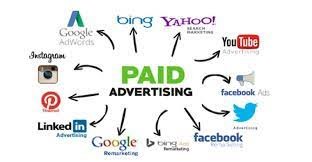Running paid ads is one of the fastest ways to drive traffic and increase conversions. But how much does it actually cost? The answer depends on several factors, including platform, bidding strategy, audience targeting, and competition. Let’s break down the costs and how you can optimize your budget.
1. Factors That Influence Paid Ad Costs
1.1 Platform Choice
✔ Google Ads (Search, Display, Shopping, YouTube) – CPC can range from $1 to $10+.
✔ Facebook & Instagram Ads – CPM averages around $7–$10 per 1,000 impressions.
✔ LinkedIn Ads – More expensive, with CPC around $5–$10.
✔ TikTok & Snapchat Ads – Lower CPC but require engaging video content.
📌 Learn more about Google Ads pricing
1.2 Bidding Strategy
✔ Manual CPC – You set the maximum cost per click.
✔ Automated Bidding – Google optimizes bids for conversions.
✔ Target ROAS – Bids adjust to maximize return on ad spend.
📌 Understand automated bidding benefits
1.3 Audience Targeting
✔ Narrow targeting increases relevance but raises CPC.
✔ Broad targeting lowers CPC but may result in lower-quality leads.

1.4 Industry & Competition
✔ Competitive industries like law, finance, and real estate have higher CPCs.
✔ Niche industries with low competition have lower CPCs.
2. Average Costs by Ad Type
| Ad Type | Average CPC | Best For |
|---|---|---|
| Google Search Ads | $1 – $10+ | High intent searches |
| Google Display Ads | $0.50 – $3 | Brand awareness |
| Facebook Ads | $0.50 – $2 | Social media traffic |
| Instagram Ads | $1 – $3 | Visual product marketing |
| LinkedIn Ads | $5 – $10+ | B2B marketing |
| YouTube Ads | $0.10 – $0.30 | Video engagement |
3. How to Optimize Your Paid Ad Budget
3.1 Focus on High-Performing Keywords
✔ Use long-tail keywords to lower CPC.
✔ Optimize Quality Score to improve Ad Rank.
3.2 Use Negative Keywords
✔ Prevent ads from showing for irrelevant searches.
✔ Reduce wasted ad spend.
📌 Learn about negative keywords
3.3 A/B Test Your Ads
✔ Experiment with different headlines, CTAs, and images.
✔ Identify which ad variations bring the highest ROI.
3.4 Optimize Landing Pages
✔ Ensure fast loading times and clear CTAs.
✔ Match ad copy with landing page content.
3.5 Set a Realistic Budget
✔ Start small and scale up based on performance data.
✔ Track CTR, CPC, ROAS, and conversions.
4. Conclusion
Paid ads can be costly but highly profitable if managed well. Focus on smart bidding, keyword optimization, and audience targeting to maximize your budget.
🚀 Need expert PPC management? Contact us today!
📧 Email: Syed_66@hotmail.com
📞 Call: 0161 399 3517
🌐 Visit: Social Media Max
Keyword Density Anal

